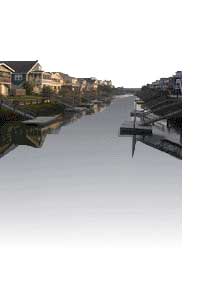UNITY...Hibatang and Jamonini Rivers converge
Oquendo is one of the three districts that comprise the City of Calbayog. It is located at the northern portion
of the City. It is located at the northern portion of the City. North of Oquendo is the Municipality of Lope de
Vega, Northern Samar. To the south-east and west are the districts of Calbayog and Tinambacan, respectively. The
poblacion lies at the northern portion of the district and is also called Oquendo.
Located at a fertile though mountainous terrain, the area attracted settlers long before the oldest of the present
inhabitants could remember. People settled along the locally historic Hibatang River. In fact, Calbayog's early
history has been associated with the area. What has been believed as the forerunner of Calbayog is San Rufino which
is found in the jurisdiction of Oquendo.
The town of Oquendo was created in 1883 in accordance with a Spanish royal order namely "Real Order No. 191 de 13
Marso de 1883 approvando la ereccion en pueblos civil de la vista de Caybago". What became the poblacion was the former
visita of Caybago. With the official approval of the authorities, the official name of the place was changed to Oquendo
a year latter.
Two years after it was created a town, Oquendo became a parish. It was erected on June 3, 1885 with royal approval
given on March 29 of the same year. It was not immediately given a parish priest of its town due to lack of priests.
Calbayog continued to administer the new parish until it was assigned to a minister.
Caybago did not remain as the poblacion. Later, Mag-ubay, for a short time, became the administrative seat
of the town and parish. However residents living along another river, Jamonini, found it tedious to transact business
in Mag-ubay. People from Cag-anibong, for example had to travel down the Jamonini river to Pagsanghan and up the Hibatang
river to Mag-ubay.
According to a story heard by some elder residents of Oquendo, an agreement was reached to transfer the poblacion
to a place located sound both the Jamonini and Hibatang Rivers. The place chosen was end also called BATO.
